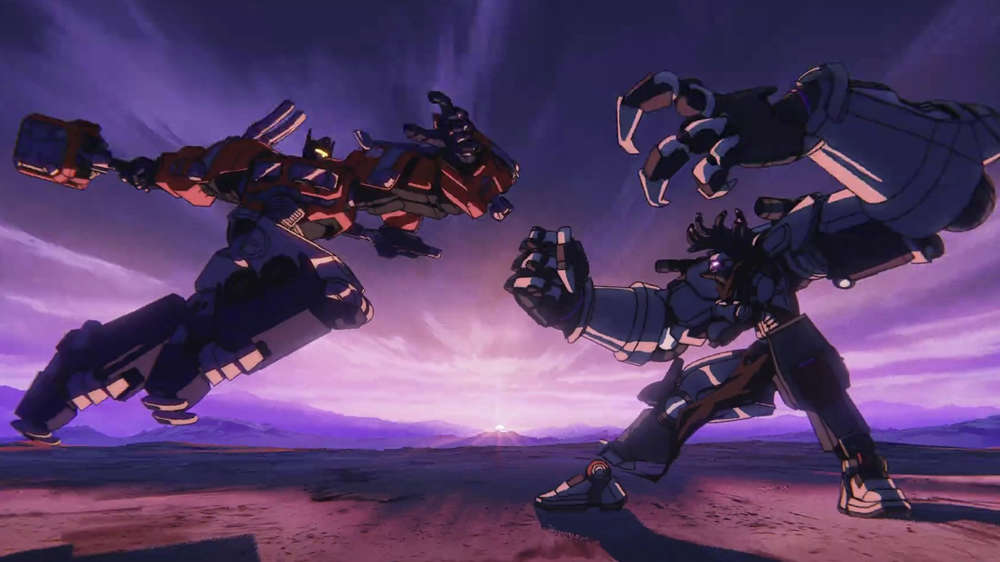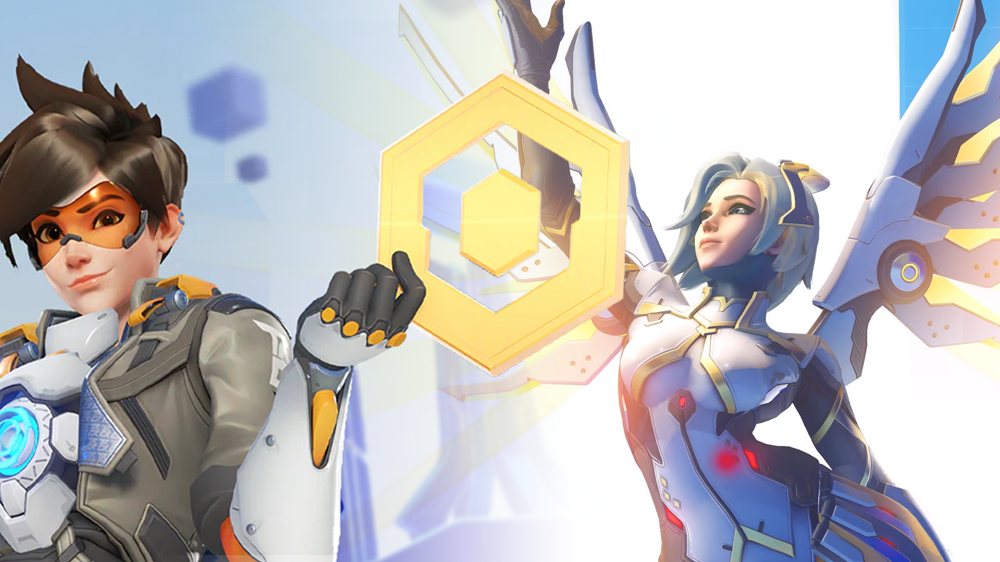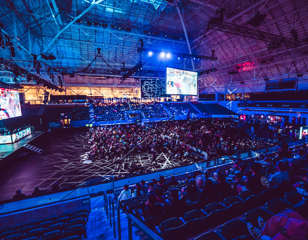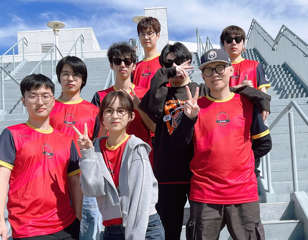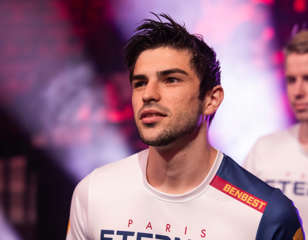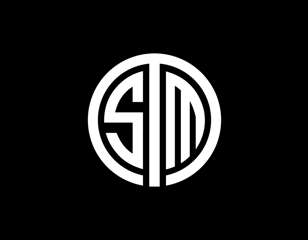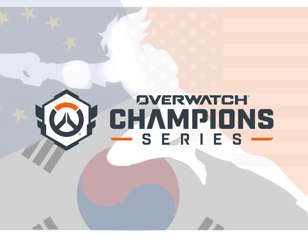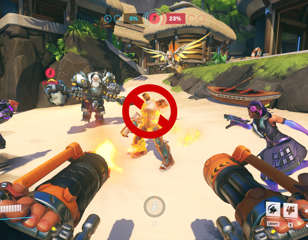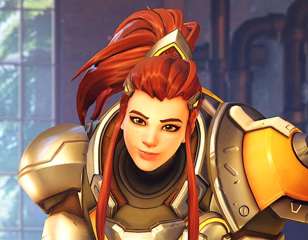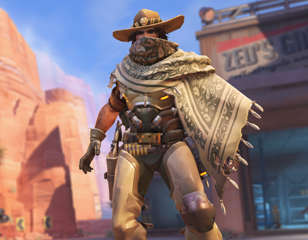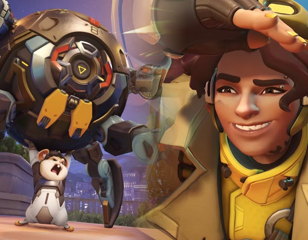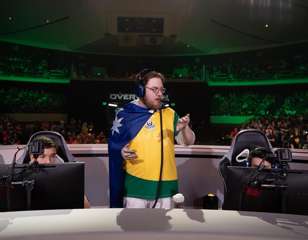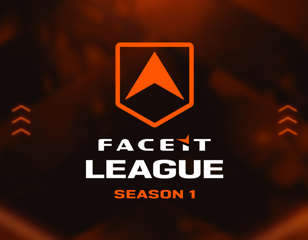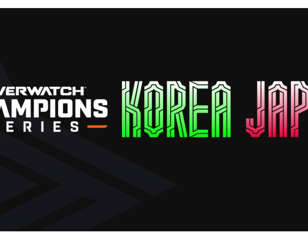Head Of OWL Says Mayhem Ruling 'Preserved Competitive Integrity' - But Did It?
A play mesmerised the Overwatch League, then it was ruled impermissible. Here is what GGRecon found out about the process.

Sascha Heinisch
13th May 2022 15:38
Image via Blizzard Entertainment

"Oh my GOD! What is this?!" Overwatch League caster Jack "Jaws" Wright exclaimed, as one of the most innovative and memorable plays of recent Overwatch esports memory unfolded in front of his eyes. The Florida Mayhem, thinking outside of the box, employed a strategy never seen before and completely blasted their opponents, the Paris Eternal, off the map. Social media feeds were filled with compliments, while internal Discord channels questioned how the move was legal.
The Mayhem won the map effortlessly, until they didn’t, as the Overwatch League ruled the boost strategy played by Florida as impermissible and forced a re-do of their attack. Dumbfounded at the decision, the Mayhem protested on social media, even putting up another cheeky wall up in the replay. Once again, rules had moved under public scrutiny in the Overwatch League.
Rules in the Overwatch League have been a regular topic of discussion in the wider community. The start of season 2 came after the introduction of two-way player contracts. These gave Overwatch League teams the option to sign players from their academy roster to contracts that allowed them to play a certain amount of matches in the Overwatch League. Boston Uprising’s main tank player, Cameron "Fusions" Bosworth, was forced to sit out in the match against the Shanghai Dragons virtually minutes before he was due to walk on stage, as the officials ruled that he had exceeded his limit of Overwatch League matches allowed by his contract. The Shanghai Dragons won their first-ever match in the Overwatch League against the Uprising after a streak of 42 lost matches.
In season 3, the League allowed the Washington Justice to sign Gui-un "Decay" Jang as a replacement for Lukas "LullSiSH" Wiklund. This was part of its contingency plan to allow teams to ensure travel in case they made top 4 in the 2020 season playoffs. Despite the generally assumed spirit of the rule, the Justice were allowed to replace their tank player, who had sat out the entire season due to a lack of visa, and were allowed to sign Decay who then played even during the Justice’s last regular-season matches.
Last season in the match between the San Francisco Shock and the Houston Outlaws, Nam-joo "Striker" Kwon was boosted onto the door frame of Oasis Gardens, a location that was otherwise inaccessible for his hero, Cassidy, and was even defined as a bug in official patch notes. The League allowed the play, leading to confusion on the rules around otherwise inaccessible map locations which GGRecon reported on. During its investigation at the time, GGRecon found that staff in coaching or managerial positions in Overwatch League franchises were uncertain about the rules specifically as they pertain to the accessibility of map locations, producing an average of only 4.1 out of 10 points on a certainty scale.
Finally, on Sunday, May 8 in the match between the Florida Mayhem and the Paris Eternal, the Overwatch League identified a rule violation in the form of an unallowed boost on the map Circuit Royale. The map was played out to completion with the Mayhem winning the map, though it was later decided that the Mei Wall and Symmetra teleporter strategy they had used was against the established rules of the Overwatch League. It was ruled that the Mayhem had to replay their attack, and the team went on to win the map once again - and eventually the series.
The situation caused a public discussion on social media arguing about whether or not it was a rule violation and on what grounds. Moreover, some parties argued the point of the rule, stating that it was shutting down creative approaches and thus limiting the quality of the viewing experience.
GGRecon looked into the details of the situation, contacting sources from around the League, including Overwatch League players and staff, in order to gain a better understanding of the foundation of the rule and its specific definition, comparing it to past incidences. We find that a transparent, exhaustive, and clear definition of the particular rule will be necessary going forward. There remain a wide range of yet undiscovered strategic options for the new maps included in the Overwatch 2 Tech Beta that arguably do not clearly find precedent in Sunday’s decision. Moreover, the decision to replay only Florida Mayhem’s attack arguably also constitutes a competitive integrity issue.
The Head of the Overwatch League, Sean Miller, responded to GGRecon’s request for comment stating: "The ruling issued on Sunday successfully preserved the competitive integrity of that match. We are confident with our communication processes and, as we continue to play on a developing build of Overwatch 2, we continue to maintain an ongoing dialogue with teams. The Overwatch League is home to the best Overwatch players in the world and our rules ensure those players have a fair and equal chance to compete with each other."
What Exactly Happened?
At a score of one to one, the match commenced on Overwatch 2’s new map Circuit Royale. The Paris Eternal ran an anti-rush composition, while the Mayhem set up for the aforementioned Wall-Teleporter play.
The Eternal lost the fight and the map commenced with several members of other Overwatch League teams bringing their suspicion of a rule violation to the League office. Because the spectator client locks members of teams onto their own player's point of view, the Eternal’s staff is unlikely to have witnessed the situation play out in detail. It is alleged that none of the Eternal staff reached out at this point to request a re-do. The map concluded with the Eternal losing the map as they also hand in their request for substitution, exchanging their tank players Ilari "Vestola" with Daniël "Daan" Scheltema, with the latter even setting up his peripherals at the PPA station.
The Overwatch League asked members of team staff to join a voice call to discuss the situation. It was ruled that the Mayhem’s attack had to be replayed. This decision switched the order with which both teams attacked and defended on Circuit Royale, giving the Eternal the first attack instead of the first defense. Moreover, the League mandated that both teams started the first fight with the exact same set of heroes.
The Mayhem took the map once more, and ultimately won the series on the last map - New Queen Streets.
Which Rule Was Violated?
According to Head Coach of the Florida Mayhem, Jordan "Gunba" Graham, the rule his team broke reads as: "No exploits of known bugs are allowed. This includes surfing (Doomfist on Midtown), or any other known or unknown exploits."
The Overwatch League did not provide the specific rule to GGRecon’s request for comment. In a Tweet, Head of the Overwatch League, Sean Miller, stated that the rule violation had been "using a Mei wall to reach unusable locations with the Symmetra teleport".
Pre-season Rule Instructions And Historical Precedent
Prior to the season, the League provided an updated rulebook and additional emails that clarified some of the rules. None of our sources could recall the particular specification of the rule that the Mayhem are said to have violated to have been part of said emails. Moreover, the League hosted calls further advising on the ruleset. None of our sources, who had been present, recall the particular rule specification being cited during said call either. The Overwatch League did not comment on GGRecon’s request for corroboration.
However, Head of the Overwatch League, Sean Miller, stated on Twitter: "While we understand this was a fun play, the ruling here is that using a Mei wall to reach unusable locations with the Symmetra teleport is an exploit and has never been allowed in OWL matches. This rule has been shared with teams and players prior to the start of the season."
Sources have advised that the particular approach, using Mei’s Icewall on a slanted rooftop to create a flat surface for Symmetra’s Teleporter to be placed on, had been ruled illegal in previous seasons, citing a position on Oasis where such a play had also been possible, but avoided due to its assumed rule-breaking nature. However, there have been instances in the Overwatch League which were ruled legal that effectively resembled Florida Mayhem’s play in substantial similarity.
Additional clarification is required
Last season, two similar instances occurred where heroes were able to get to otherwise inaccessible locations using Mei’s Wall boost. The more publicly known one was Striker’s play on Oasis Gardens against the Houston Outlaws. Playing Cassidy, Striker was boosted onto an otherwise inaccessible ledge to his hero, which has since been removed from the game in Overwatch 2 Tech beta.
As previously stated, staff and players from several Overwatch League franchises allegedly reached out to the front office with an understanding that this play had violated Overwatch League rules. Play continued, and the League later stated to GGRecon that the play had not been a violation of its rules.
A similar situation, that did not cause a public discussion at the time, happened between the Houston Outlaws and the Los Angeles Gladiators on King’s Row.
Also choosing the Wall-Teleporter boost strategy, the Outlaws employed a creative strategy that arguably violated the rule specification Sean Miller tweeted. Namely:
- The red pillar which the Outlaws used to elevate Mei’s Icewall over the choke wall of King’s Row A was also an "unusable location", pushing heroes trying to stand on it off the structure, similar to how Florida Mayhem’s roof location would
- It also utilised Mei’s Icewall and Symmetra’s Teleporter
Also, the way Symmetra is boosted up onto the wall, seemingly being teleported on top of it while the wall doesn’t make any connection with the surface Symmetra is standing on, is arguably also a bug exploit that would be surmised under the general rule of avoiding the exploitation of bugs that Gunba cited.
Practically, the play achieved very similar goals in allowing the Outlaws to skip a choke from safety in presumably unintended ways.
The Overwatch League did not respond to a request for comment on whether the rules had changed from last to this season, or whether this play by the Outlaws would be deemed a rule violation this season.
Given the potential of similar locations to be found in the new maps introduced through the Overwatch 2 Tech Beta, a more detailed and robust rule specification is needed. Sources have shared some of those edge cases with GGRecon that appear to fall into this grey zone and require additional clarity.
The Decision To Re-do Only Mayhem’s Attack Is A Violation Of Competitive Integrity
After the rule violation was communicated to the teams, it was decided that the competitors had to replay only Mayhem’s attack, while also using the same hero compositions. There are two issues with this resolution that the Overwatch League decided on.
Firstly, the decision to only allow the same hero compositions does not establish an even playing ground that appears to be the spirit of the ruling. Given that the Mayhem’s strategy clearly revolved around the execution of the impermissible boost, the application of the comp through the usual route plays out significantly differently. The same can be said about the Eternal’s strategy, which assumed an opponent attacking in ways that wouldn’t violate the rules, which directly impacts their ability to predict the opponent’s strategy.
The order of operation changed, giving Mayhem the second instead of the first attack while Paris’ second attack was counted as if it was the first. The change in the order, no matter how advantages may play out in Overwatch 2, still impacts competitive integrity. GGRecon’s sources argue that the knowledge of how far you need to push on your attack impacts the amount of risk a team may take in their strategic and tactical choices. As an example, a team that full holds another could theoretically employ a strategy with less risk to never win a fight through stronger power plays via slow but high-value ultimates.
Statistically, there have been significant differences in Overwatch 1 between win rates of teams that have the first or second attack. Sourcing data from Escort maps between Overwatch League season 2 to 4, out of 365 played matches the team that had first attack won 200 times, almost 55% of the time.
Team sources we talked to stated that they were surprised that the Overwatch League didn’t decide on the entire map to be replayed and have expressed that they find this to be a violation of competitive integrity. They argue that a complete restart of Circuit Royale without the hero restrictions would’ve allowed put both teams to meet each other on equal grounds.

About The Author
Sascha Heinisch
Sascha "Yiska" Heinisch is a Senior Esports Journalist at GGRecon. He's been creating content in esports for over 10 years, starting with Warcraft 3.
Related
More Like This
OWL-winning Coach of the Year retires due to 'lack of financial incentives'
One of the main characters of the last two years of competitive Overwatch just retired, citing gruelling work hours and a lack of income opportunities. Is this yet another canary in the coal mine event for the esport?
88 weeks ago

